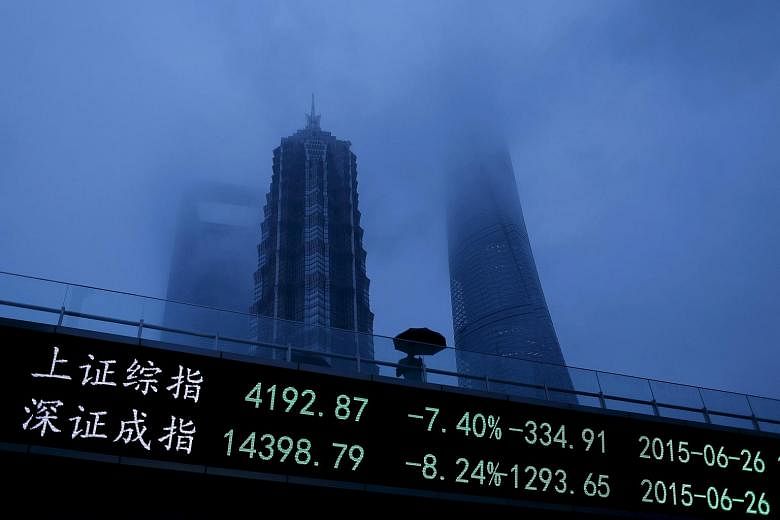Here's a look at the China stock market's roller-coaster ride:
Why did the market surge?
China's central bank cut interest rates for the first time in more than two years last November, which was the beginning of the borrowing-fuelled rally in the stock market.
The launch of a scheme linking trading between the Shanghai and Hong Kong stock exchanges also led to the surge.
The rally continued this year, with the benchmark Shanghai index climbing to the symbolic 5,000-point level last month, driven higher by margin trading. When it peaked on June 12, it had risen more than 150 per cent over the previous 12 months.
Why did it fall?
On the day the market reached its peak, China's securities regulator said it would tighten rules on margin trading for individual investors.
The next day, the China Securities Regulatory Commission (CSRC) banned trading with funds borrowed outside the margin-trading system.
When markets reopened, investors started to take profit on worries of over-valued stock prices and increasing market risk. The deleveraging process became uncontrollable, resulting in Shanghai plunging almost 30 per cent over three weeks.
Market sentiment worsened as investors who traded on margin were forced to liquidate their stock holdings to make payment.
What's being done to support the market?
China's central bank announced cuts in interest rates and banks' reserve requirement ratio - the amount of money banks must put aside.
The market regulator announced a relaxation of margin-trading rules and reduced stock transaction fees. Soon the government announced proposals to let social security pension funds enter the stock market.
CSRC cut back on the number of initial public offerings, then went a step further by halting them for the near future.
The central bank said it would provide funds through the state-backed China Securities Finance Co. to "protect the stability of the securities market", while 21 of the largest brokerages said they would invest at least 120 billion yuan (S$26 billion) in so-called "blue chip" exchange- traded funds.
What happens next?
No one knows and the market remains wildly volatile. Investors forced to sell could drive prices lower, or bargain-hunters could see a buying opportunity and step in.
Analysts forecast the benchmark Shanghai index may rebound to around 4,000 points in the next month.
AGENCE FRANCE-PRESSE

